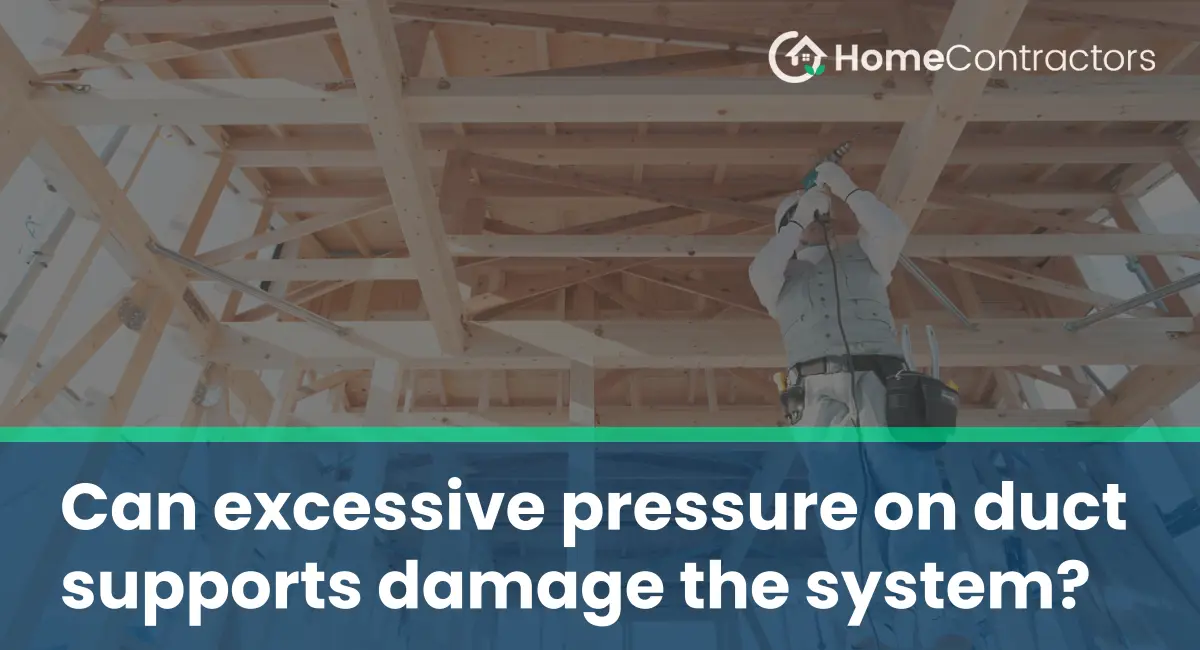Ductwork is a critical component in heating, ventilation, and air conditioning (HVAC) systems, responsible for distributing conditioned air throughout a building. While much attention is given to the design and installation of ductwork, the importance of proper support cannot be overlooked. Excessive pressure on duct supports can potentially lead to various damages within the system, compromising its efficiency and performance. In this article, we will delve into the implications of excessive pressure on duct supports and understand the potential damages it can cause.
Understanding Duct Supports:
Duct supports play a crucial role in maintaining the structural integrity of HVAC systems. They suspend the weight of the ductwork and ensure it remains secure in its intended position. Proper support helps prevent sagging, excessive movement, and misalignment of ducts, which can negatively impact airflow and distribution efficiency. Duct supports also safeguard against potential stressors such as vibrations and external forces, ensuring the system operates smoothly and quietly.
Implications of Excessive Pressure on Duct Supports:
When excessive pressure is exerted on duct supports, either due to improper installation or external factors, significant damages can occur within the system. Let’s explore some of the potential implications:
1. Duct Deformation:
Increased pressure on duct supports can cause deformation or bending of the ducts themselves. This deformation restricts the airflow, reducing the overall efficiency of the HVAC system. It can also lead to air leakage, resulting in energy wastage and higher operational costs.
2. Misalignment:
Excessive pressure on duct supports can cause misalignment, as the supports may succumb to the strain and shift from their intended positions. Misaligned ducts can disrupt the airflow, causing hot or cold spots, reduced comfort levels, and inefficient temperature control within the building.
3. Vibrations and Noise:
Improperly supported ducts can also become prone to vibrations, especially during the operation of HVAC systems. These vibrations can generate noise, leading to discomfort and disturbances for occupants. Furthermore, consistent vibrations can potentially lead to more severe damages within the ductwork and even compromise the structural integrity of the building.
4. Increased Wear and Tear:
The additional stress placed on duct supports due to excess pressure can result in accelerated wear and tear. Over time, this can lead to weakened supports, detachment, or complete collapse of sections, risking the safety of occupants and requiring costly repairs or replacements.
Avoiding Damages Caused by Excessive Pressure:
To prevent damages resulting from excessive pressure on duct supports, several measures can be taken:
1. Proper Design and Installation:
The ductwork should be designed and installed in compliance with industry standards and guidelines. Adequate support systems, including hangers, brackets, and straps, must be used at regular intervals to distribute the weight evenly.
2. Regular Maintenance:
Periodic inspections and maintenance are crucial for identifying any signs of excessive pressure on duct supports. This includes checking for signs of deformations, misalignments, or wear and tear. Timely repairs or modifications can mitigate potential damages and maintain the efficiency of the system.
3. Load Capacity Assessment:
During the design phase, load capacity assessments should be undertaken to determine the maximum weight the duct supports can handle. This ensures that the supports are designed and installed according to the specific requirements of the HVAC system.
Excessive pressure on duct supports can have significant consequences on the functionality and lifespan of an HVAC system. From duct deformation and misalignment to increased wear and tear, the damages resulting from excessive pressure compromise the performance, energy efficiency, and comfort levels of the building. By prioritizing proper design, installation, and maintenance of duct supports, building owners and HVAC professionals can mitigate these potential damages and ensure the longevity and optimal performance of the system.
